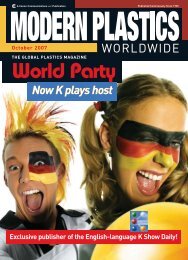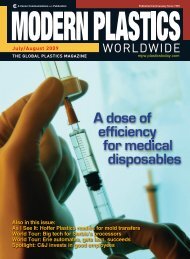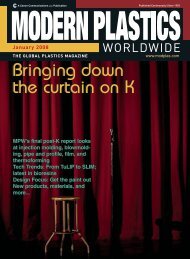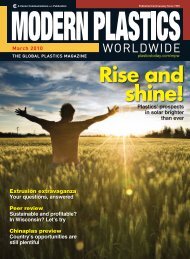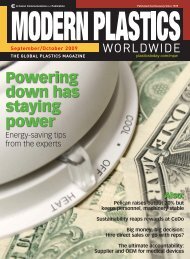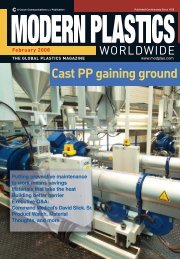amidiq - dae uptlax
amidiq - dae uptlax
amidiq - dae uptlax
Create successful ePaper yourself
Turn your PDF publications into a flip-book with our unique Google optimized e-Paper software.
J. L. Arredondo-Figueroa et al./ Revista Mexicana de Ingeniería Química Vol. 6, No. 3 (2007) 301-308<br />
metabolic activity of bacteria due to changes in<br />
nitrogen concentration neither in the substrate nor in<br />
load fish rates. Similarly, no inhibitory effect was<br />
detected on the nitrifying rate at pH 8.4, in<br />
agreement with the result reported by Wild et al.<br />
(1971).<br />
Rjin et al. (1986) studied the concentrations of<br />
ammonia nitrogen and nitrite generally found in<br />
wastewater from fish culture. The values reported by<br />
these authors (0.0 to 5.0 mg/l and 0.0 to 2.0 mg/l of<br />
of TAN and nitrite, respectively) did not reach<br />
inhibitory levels for nitrifiers. Therefore, it was<br />
assumed that the bacteria nitrifying rate in the<br />
biofilter was enough to maintain ammonia and<br />
nitrate concentrations within necessary limits for<br />
nitrification, keeping water quality suitable for<br />
rainbow trout growth.<br />
The response to a high ammonia concentration<br />
was the expected one. TAN concentrations<br />
significantly decrease as a function of load rate. The<br />
system reacted to this variation, with an 80%<br />
decrease in ammonia concentration in the outlet (RT)<br />
as compared to inlet (FT). When the load fish rate<br />
was 194 kg the percentage reduction was 96.7%,<br />
87.3% with 156 kg load fish rate and 82.7% with 89<br />
kg.<br />
The TAN concentration difference between<br />
fish and settling tanks, where all effluents were<br />
collected, was around 50%. These differences can be<br />
attributed to an air-stripping effect due to the strong<br />
airflow generated on the fish tanks bottom. Chiang<br />
and Lee (1986) and Körner et al. (2001)<br />
demonstrated that TAN consisted of ammonium ion<br />
(NH4 + ) and unionized ammonia (NH3). Although<br />
both may be toxic to fish, unionized ammonia is the<br />
more toxic form attributable to the fact that is<br />
uncharged and lipid soluble and consequently<br />
traverses biological membranes more readily than<br />
the charged and hydrated NH4 + ions. These chemical<br />
forms vary their relative concentrations according<br />
with the medium pH. Under conditions of high<br />
airflow, temperature and pH, it is possible to shift the<br />
relative concentration almost completely to NH3. In<br />
the air-stripping process, agitation and aeration<br />
remove ammonia in gaseous form from water under<br />
conditions of high pH. Ammonia removal<br />
efficiencies of 80 to 90% have been achieved in<br />
domestic and industrial effluents by this method<br />
using wastewater treatment plants (Yang, 1997). It<br />
was estimated that most of the ammonia in our study<br />
system was removed by an air-stripping effect in the<br />
fish tank, the rest was eliminated by biofilter<br />
nitrifiers as well as in reconditioning tank (outlet)<br />
remaining only a small proportion of this gas<br />
(between 12.7 and 17.3% of the TAN). However,<br />
under our experimental conditions, this level (0.23<br />
mg/l) can be considered permissible and did not<br />
affect the growth and survival rates of rainbow trout<br />
(Arredondo et al., 1996).<br />
In spite of the high TAN values recorded in<br />
the fish tank (1.96 mg/l highest value), the main<br />
factors determining non-ionized ammonia<br />
concentration are water temperature and pH, 19°C<br />
average water temperature and pH 8.4 were recorded<br />
in our study system. Taking into account these<br />
values, it is possible to obtain 9 to 11% of unionized<br />
ammonia (NH3). However, the effect of this<br />
relatively high concentration on rainbow trout was<br />
probably reduced by the presence of factors such as<br />
high chlorine, sodium and potassium salts<br />
concentration as well as high levels of dissolved<br />
oxygen. The concentration of both, salts and oxygen<br />
had a compensatory effect on the additional demand<br />
of rainbow trout and ammonia loss by air-stripping.<br />
It is important to note that high concentrations of<br />
chloride (> 300 mg), potassium (57 mg/l) and<br />
sodium ions (1.5 g/l) have been consistently reported<br />
in epicontinental bodies of water at Central Mexican<br />
Plateau. High concentrations of these ions have a<br />
direct effect on some physiological processes<br />
because they reduce ammonia and nitrite toxicity,<br />
and reduce pH fluctuations and osmorregulatory<br />
problems on fish (Parker and Davis, 1981;<br />
Arredondo and Lozano, 1994).<br />
Not all-available ammonia was eliminated by<br />
air-stripping and biological nitrification due that the<br />
fish tanks were cleaned twice a day, and faeces and<br />
pieces of uneaten foods were removed from the<br />
bottom. Other debris were eliminated in other ways<br />
such as pressure washing of the sand filter and<br />
periodical elimination of solids in the settling tank.<br />
Unionized ammonia (NH3) concentration<br />
varied from 0.01 to 0.11 mg/l. Higher values were<br />
observed in FT and ST with significant differences<br />
(p ≤ 0.05) with respect to the other sample sites.<br />
Also, was observed a direct relationship with load<br />
fish rates. Unionized ammonia was significantly<br />
different in 156 and 194 kg treatments with respect<br />
to lower load rate (Table 3). Occasionally, average<br />
non-ionized ammonia in the FT and ST with<br />
different densities exceeded levels reported as<br />
acceptable for rainbow trout (Smith and Piper, 1975;<br />
Smart, 1976; Alabaster et al., 1979; Klontz, 1991;<br />
Neori et al., 2004; Colt, 2006) where an optimal<br />
range falls between 0.01 and 0.5 mg/l. If higher<br />
values are kept, for extended periods of time, gill<br />
hyperplasia as well as reduction in growth rate and<br />
increased in oxygen consumption can be observed in<br />
rainbow trout culture. There was also evidence, that<br />
high ammonia level could cause weakening and fish<br />
predisposition to parasite infestations, hence<br />
reducing their stamina index (Liao and Mayo, 1974).<br />
Even though, no adverse effects were observed in the<br />
trout subjected to this experiment.<br />
Removal of ammonia at higher rates could<br />
probably be achieved at higher concentrations of<br />
ambient ammonia. Ammonia removal by the biofilter<br />
increased linearly with load rate. These results<br />
agreed with those reported by Rjin and Rivera<br />
(1990).<br />
305



